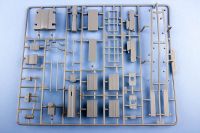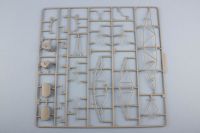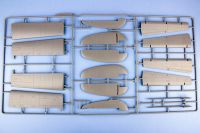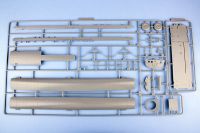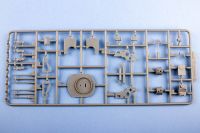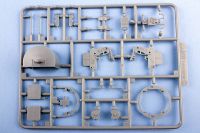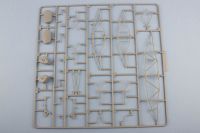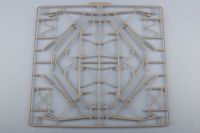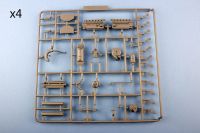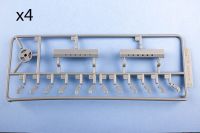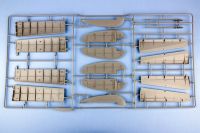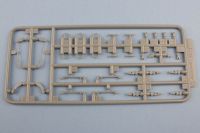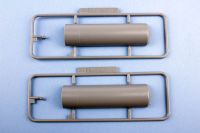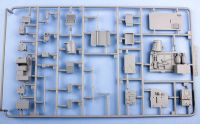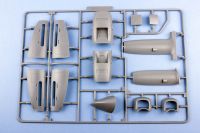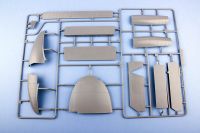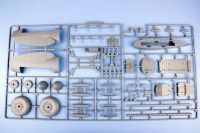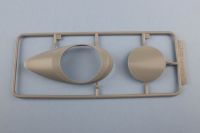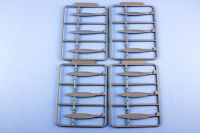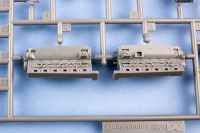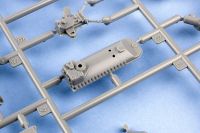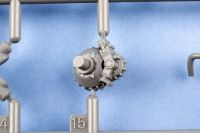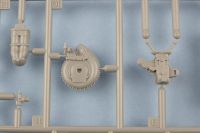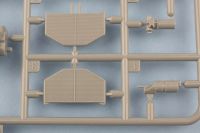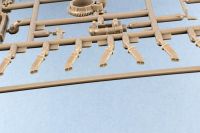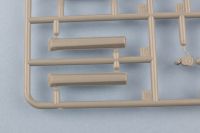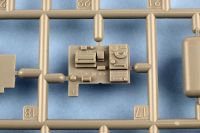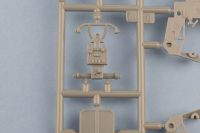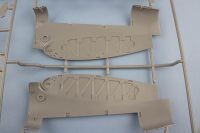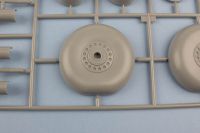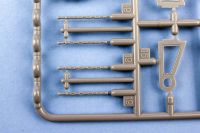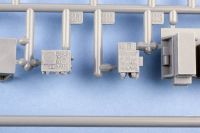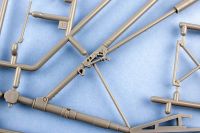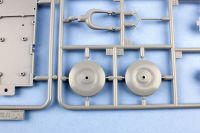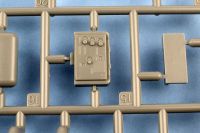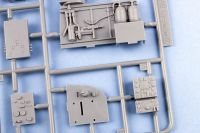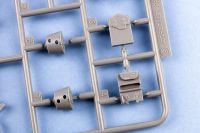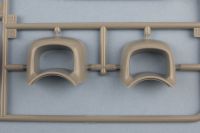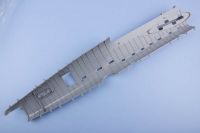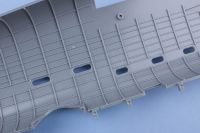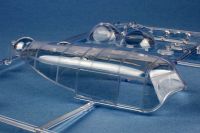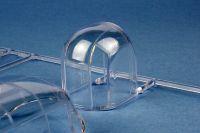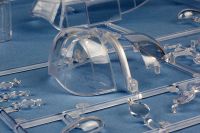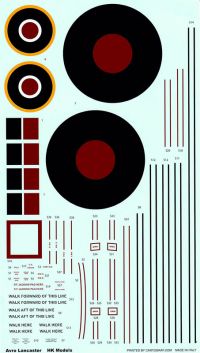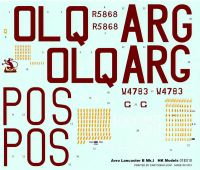HK Models | 01E010: 1/32 Lancaster B Mk I
Reviewed by Kevin Futter
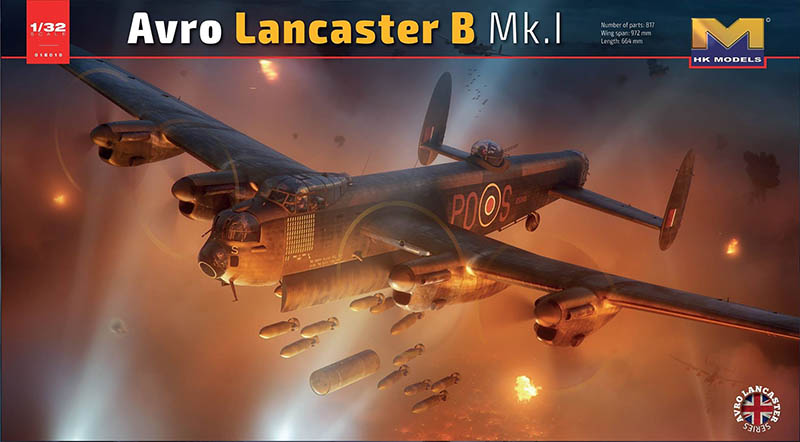
The protracted gestation period for the HK Models Lancaster kit has been a source of frustration for LSP modellers since the kit was first announced some years back. We're pleased to say that the kit has finally been released as a B Mk I variant, so let's take a look at what you get in the box.
The first thing to note is that our review sample is one of the initial batch (1500 examples, I believe) that comes with a duplicated set of fuselage parts in clear plastic. This is denoted on the box with an additional sticker:
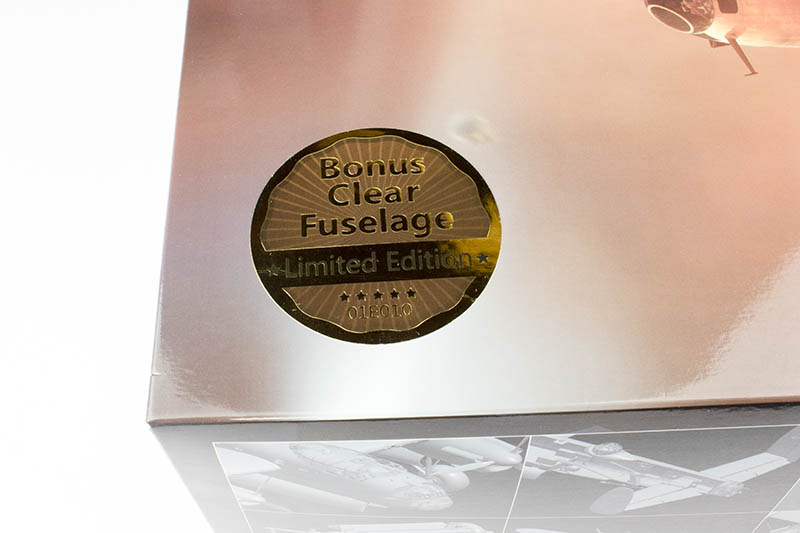
We'll examine these bonus clear parts later in the review.
The Plastic Sprues
To say that this is a massive kit is an exercise in understatement. It comes in a box that appears to be the same size as the one used for the company's B-17 series, and purports to contain 824 parts. The dimensions of the finished model are given as 972mm for the wingspan, and 664mm for the fuselage length. We're talking about a very large, very detailed kit here!
All the sprues are packaged in groups inside resealable plastic bags for maximum protection. Many of the larger parts and sprues are housed in individual bags where appropriate.
Note that the contrast has been increased in many of the photos below to better show the moulded-in details, which can make the colours look a little odd, unfortunately.
By my count, that's 40 separate sprues!
Below are some close-up photos showing the level of detail included in the kit:
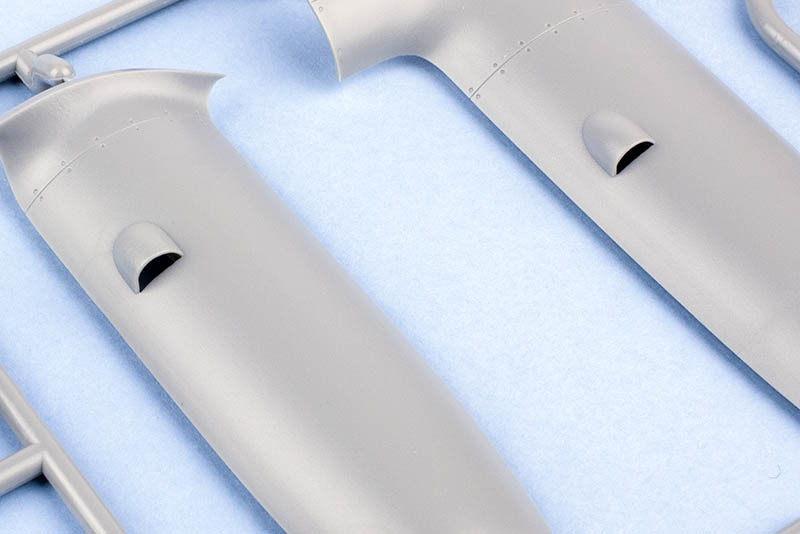
↑ The air intakes on the nacelle panels are moulded open, with suitably thin material thickness.
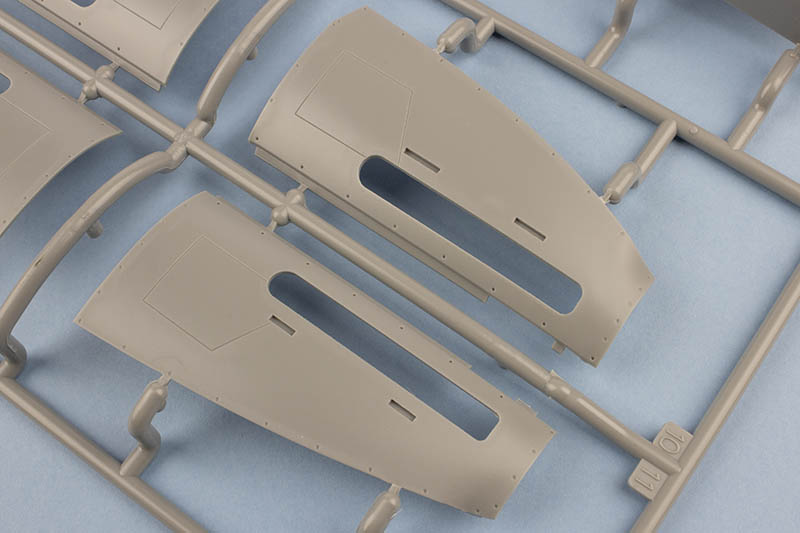
↑ The fasteners on the cowling panels are represented as petite holes, but should look fine under paint.
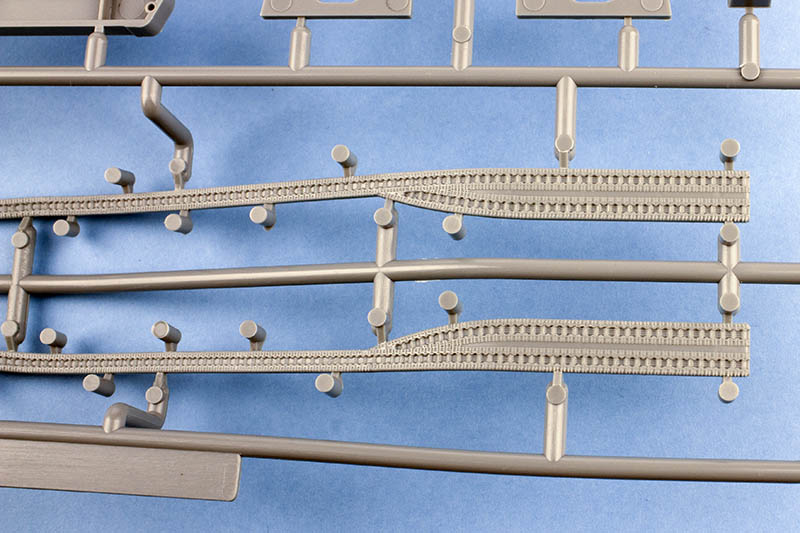
↑ The ammunition feeds for the rear turret. Their physical layout has been simplified, but will likely be difficult to see on the finished model in any case.
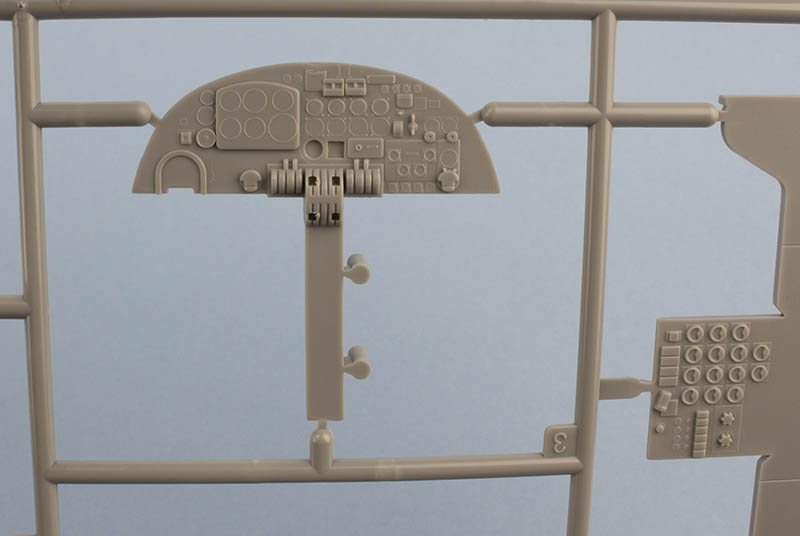
↑ The instrument panel is nicely detailed, but no dial decals are supplied for the instrument faces.
Four Merlin engines are supplied in the kit, and these are also quite nicely detailed:
The bomb bay roof is nicely detailed, but features a surprising number of ejector pin marks. Being raised, these should be easy enough to remove with suitable modelling chisels. They should also be difficult if not impossible to see once a full bomb load is installed:
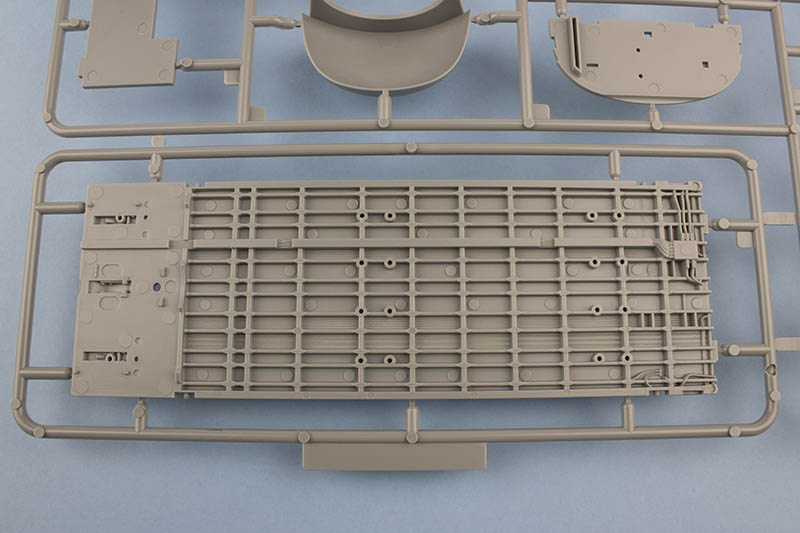
Likewise, the flaps exhibit the same mix of nice detail and raised ejector pin marks:

These will be more difficult to remove than those on the bomb bay roof, but certainly not impossible. By contrast, the bomb bay doors feature very slight indented ejector pin marks:
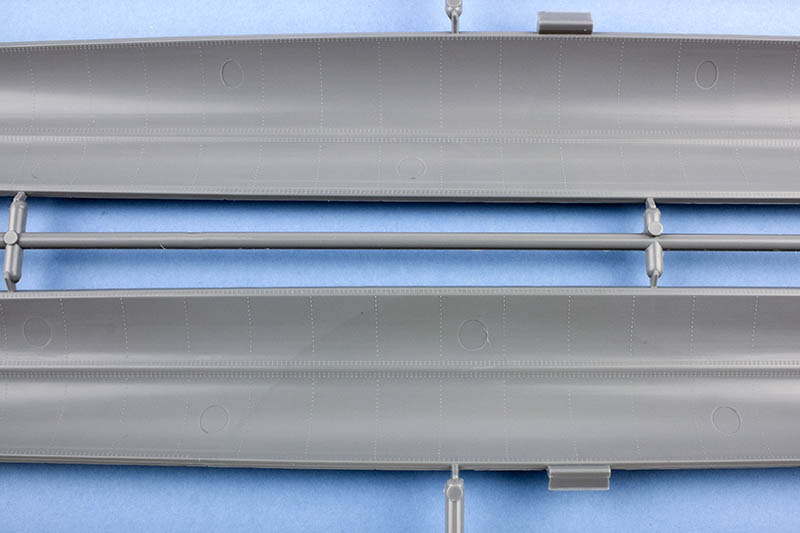
These are quite shallow, and shouldn't take much effort to eradicate. Still, it's unfortunate that this kit has so many ejector pin marks in visible areas, and while not show-stoppers, they will require additional time and effort to deal with.
Two types of propellor blades are supplied:

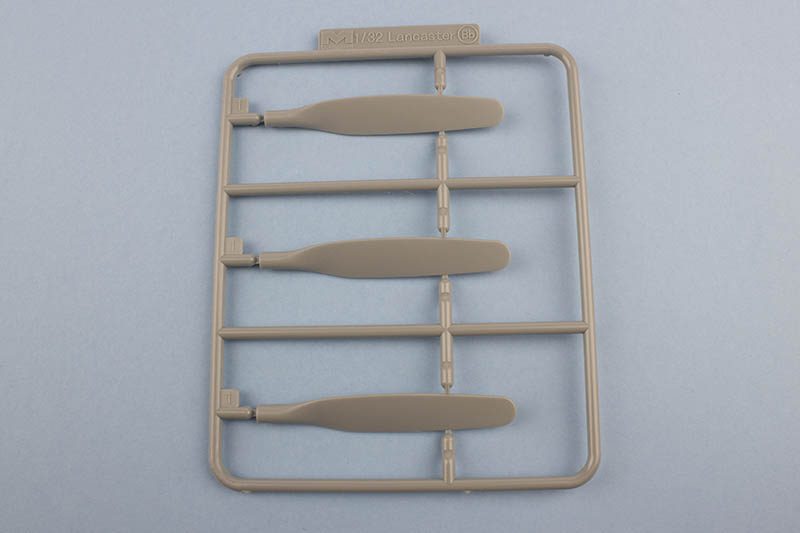
↑ This additional set of paddle-blade props is supplied, but not mentioned in the instructions at all. I believe they're only applicable to late-build Lancasters.
Below is a random selection of additional close-up photos:
The Wings
As you might expect, the wings are rather large pieces of plastic!
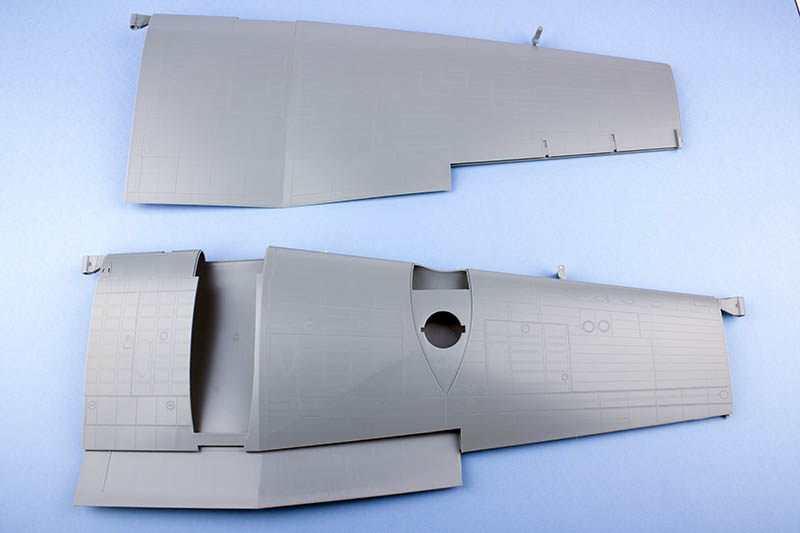
Not so expected, however, is that HK Models has moulded the upper and lower main wing sections as single pieces:
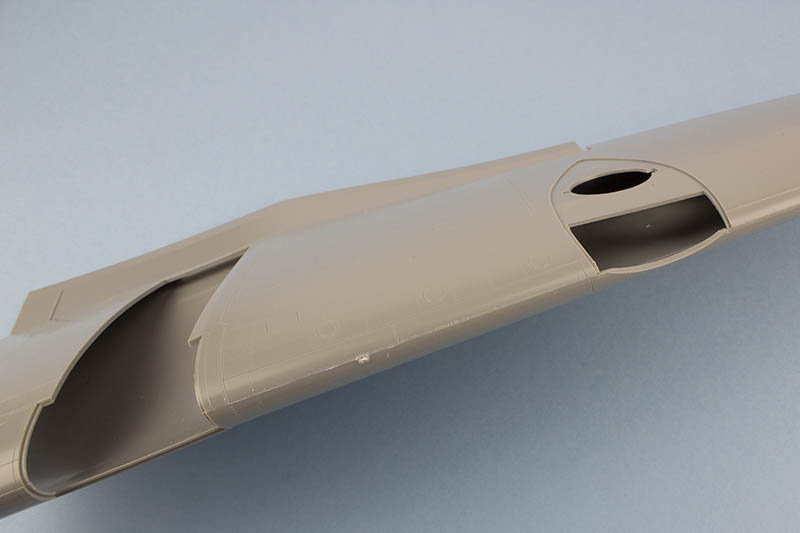
There is still a seam line to clean up where the upper and lower halves meet, but it's still an impressive piece of mould engineering. The company did similarly with its Mosquito releases, but these wing parts are substantially larger than those.
The wing tip parts are also moulded as single, hollow pieces:
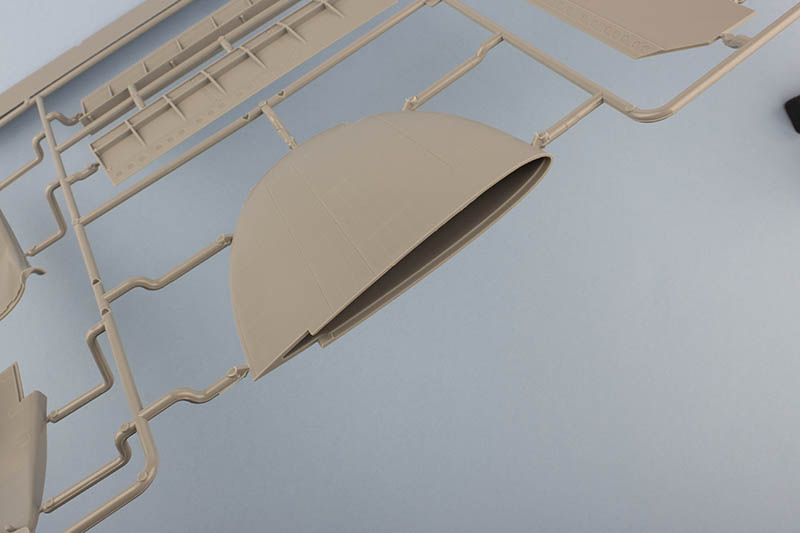
There's a corresponding lip moulded into the ends of the main wing sections to mount the tips securely:

Surface detail is typical of a modern kit release, featuring very fine recessed panel lines and rivets:

The Fuselage
Much like the company's previous 4-engine heavy bomber release, the B-17, this kit has the fuselage moulded in four parts, with separate main and nose sections.


The interior has a full complement of rib and stringer detail along its entire length, and unlike other areas of the kit, is blissfully free of those annoying ejector pin marks:
The fuselage parts do, however, feature a plethora of injector gate attachment sprues along their respective mating surfaces:
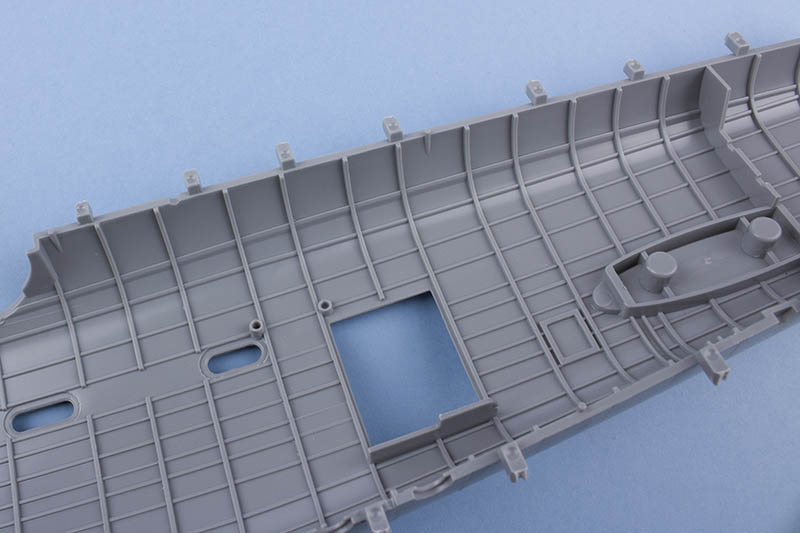
The aim here is clearly to shift any damage done in the process of removing the attachment points from a visible, detail-filled surface, to an invisible one. This is commendable, but with so many of them present, care will still need to be taken to ensure that the mating surfaces aren't unduly distorted or damaged during the removal process.
Hefty mounting shoulders for the wings are moulded into the fuselage to ensure a strong fit and the correct dihedral:
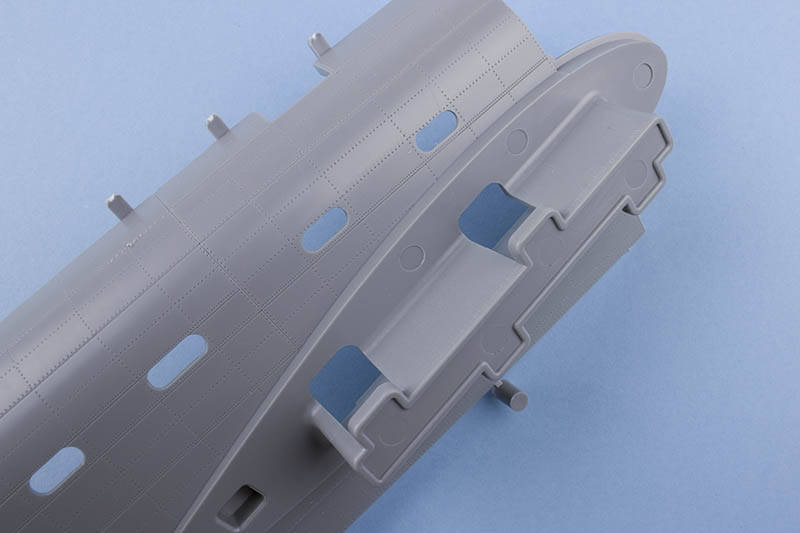
There's a similarly robust mounting receptacle for the tail planes:
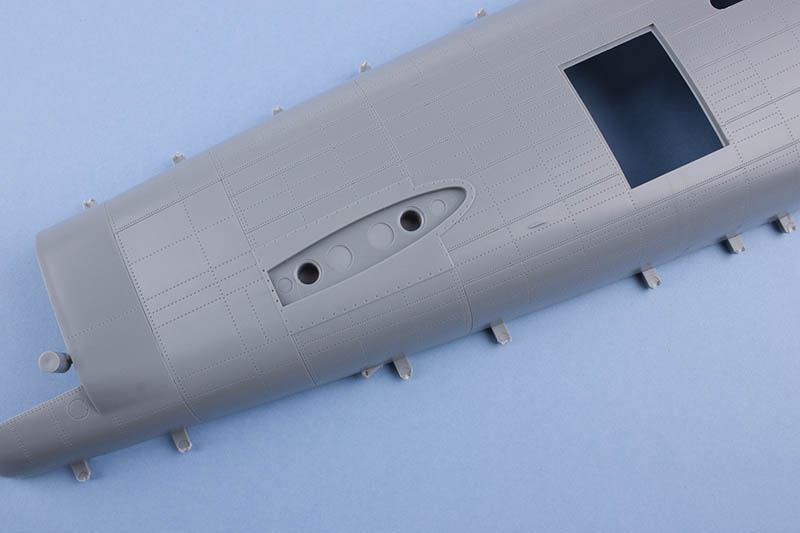
Surface detail is in keeping with that on the wings, with some raised panelling as appropriate:
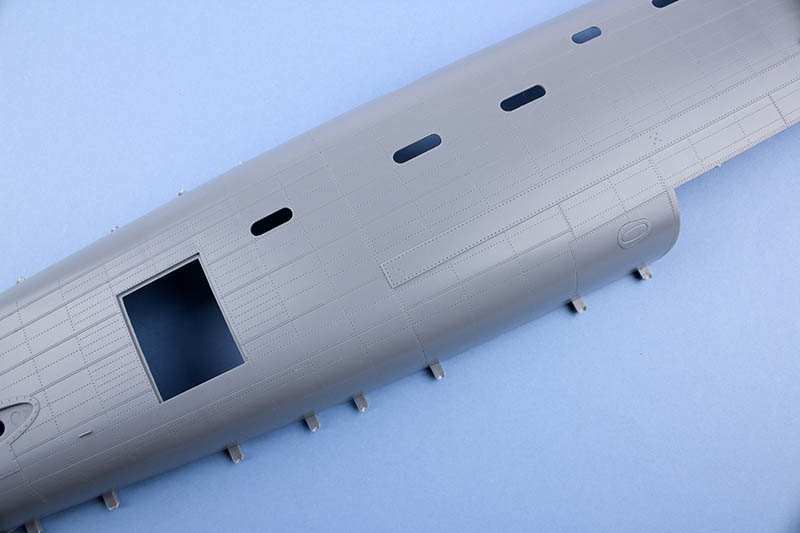
My sample, however, did suffer from some a slight moulding defect along one of the recessed panel lines:

Alternative Clear Parts
One of the features of the this initial Limited Edition release of the kit is the inclusion of a set of duplicate fuselage parts, moulded in clear plastic. Both sets of fuselage parts come sealed in individual soft plastic bags, but these clear versions feature additional protection in the form of a thin but tough film of clear plastic:
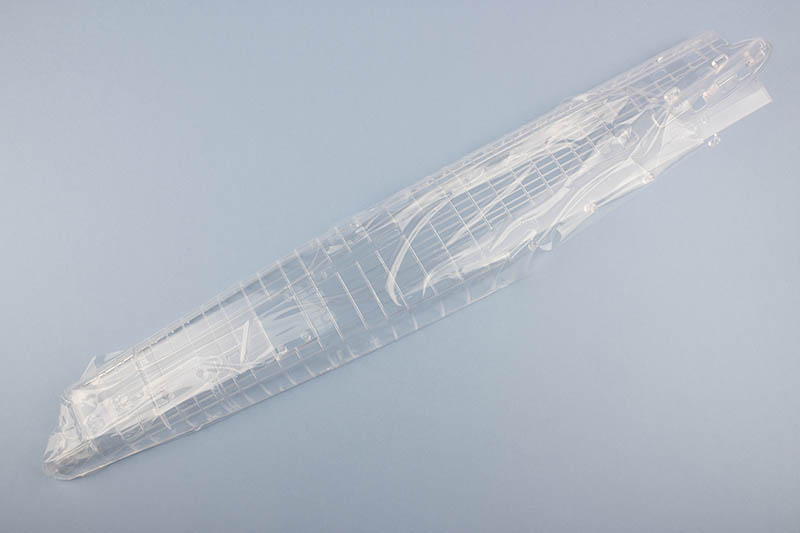
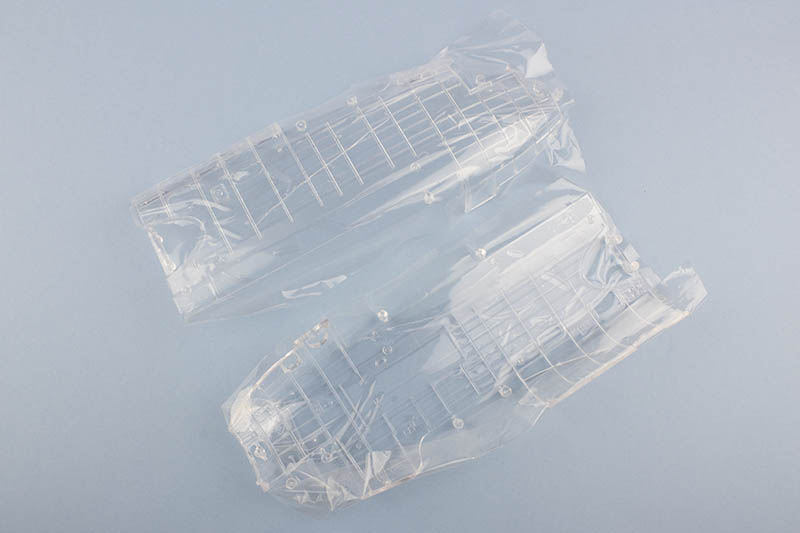
Pulling back the protective plastic film reveals that these parts are in fact not identical to their opaque brethren, as they feature no surface detail whatsoever:
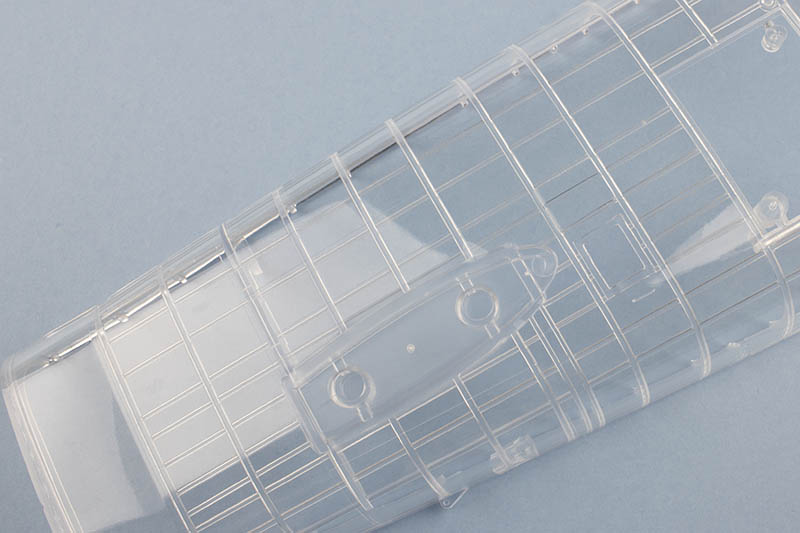
This has clearly (ahem) been done in order to avoid obscuring the internal details these parts are meant to reveal. They were actually moulded before the final surface detail had been tooled into the mould—so when HK Models says these parts are limited edition, they really mean it, as the moulds have since altered such that they can no longer produce these parts in this form.
Otherwise, all the internal detail from the opaque parts is present and accounted for. Sadly, one of the nose halves on my sample had a nasty crack in it, rendering it unusable as a clear part:
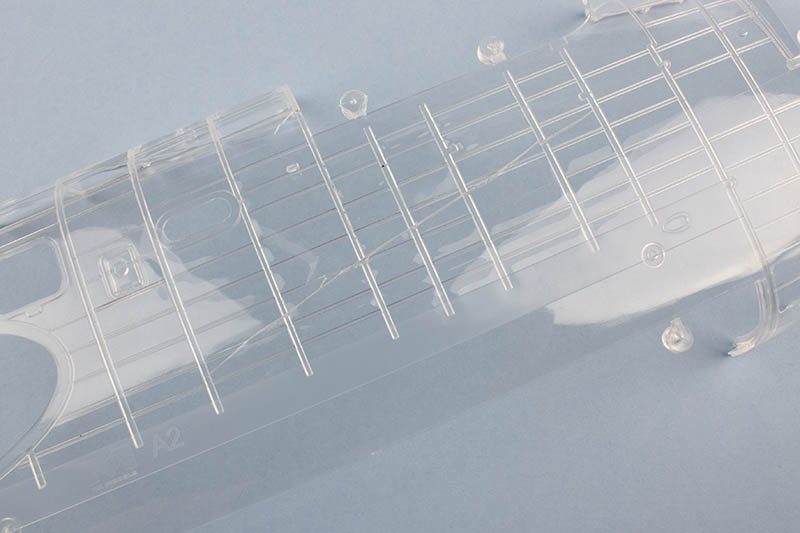
This is a shame, especially since obtaining a replacement piece may be difficult. Still, my bet is that most folks planning to use these clear fuselage parts will only expose one side or the other, so that at least limits the scope of this particular problem. For my own build, I'll be using the opaque plastic parts, so it's a non-issue for me personally. And to be fair, this is the kind of damage my kit had to sustain in transit to produce this crack at all (the outer shipping box was completely punctured):

To give you an idea of what the clear fuselage parts look like on a finished build, LSP member Dave Langmead has kindly allowed me to post the following photo of his build of a test shot (as seen at Telford 2018):

The Clear Parts
The rest of the clear parts are for the more traditional roles of canopies and windows, and are supplied on two sizable sprues:
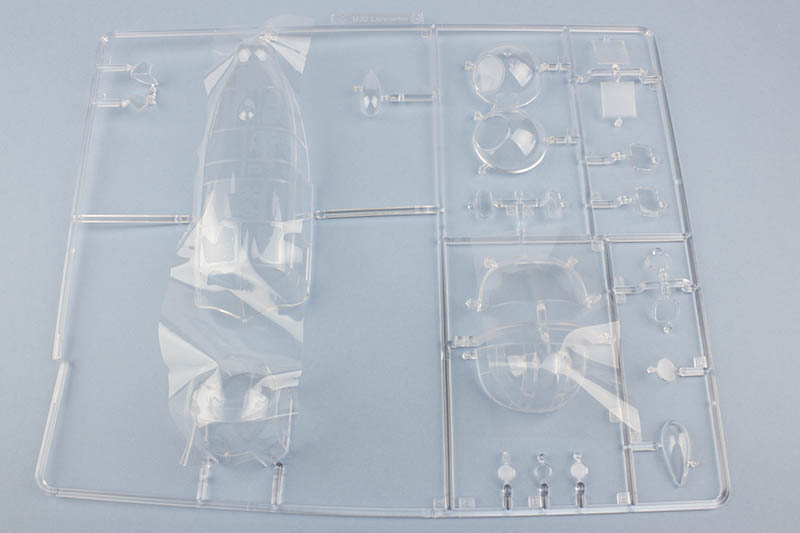
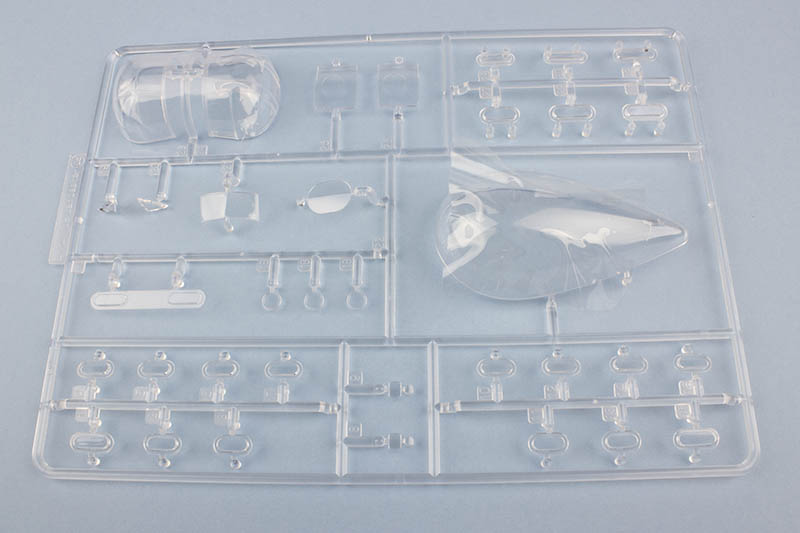
The same kind of plastic film used to protect the clear fuselage parts is also used here, across the tops of the larger parts.
The parts themselves are incredibly crisp and clear, and pass the distortion test with flying colours:
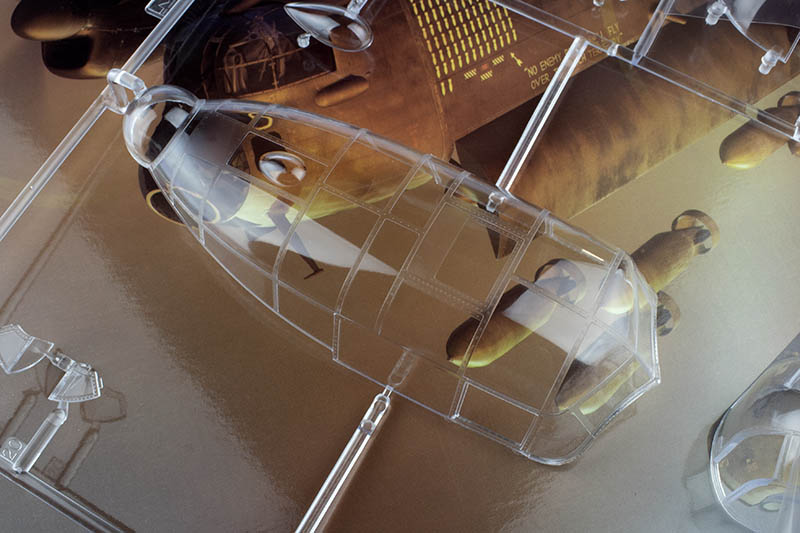
In order to represent the various options seen on production Lancasters with regard to the canopy side blisters, HK Models has opted to provide the blisters themselves as separate parts to be attached to the appropriate side panel on the canopy itself. This creates a double-glazing effect, with a flat clear panel under the blister that is not present on the real thing. While this sounds like a poor choice, Dave Langmead, who has built a test-shot of the kit, offered the following photo as evidence that it's not really a problem in practise:
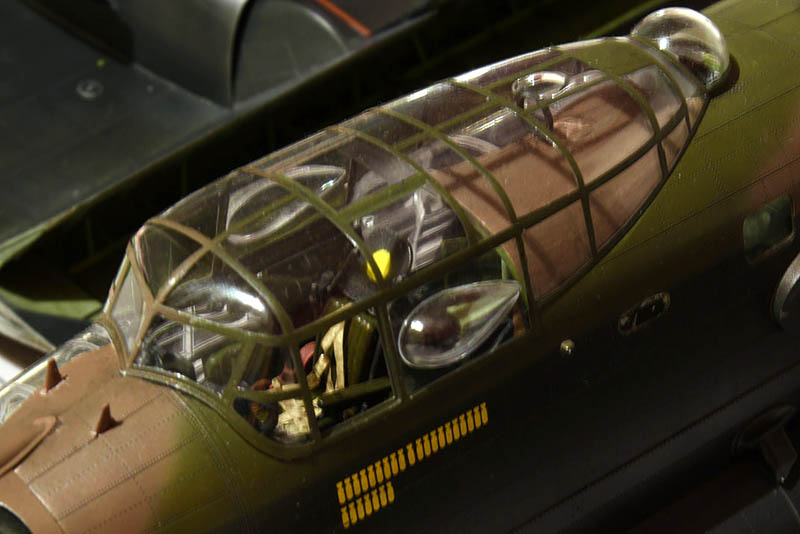
Still, the company managed to solve this same issue with its Do 335B-2 release by providing separate bulged and non-bulged panels to insert into the canopy as appropriate, so it's curious that they didn't take that approach here, too.
The Photo-etched Parts
The kit comes with a small photo-etched fret that consists of seat belts, and some panels that appear to associated with the turret assemblies. Oddly, the parts diagram in the instructions suggests that there should be two of these frets in the kit, but mine only came with one. A quick glance through the assembly sequences didn't clarify matters, so I'm still unclear about that.
Neil Yan from HK Models has clarified that the instructions are in error with regard to the number of photo-etch frets in the kit. There is—and should be—only one.

The Instructions
The instructions for this kit reflect the current approach from HK Models, being in large booklet format, and consisting of annotated exploded isometric diagrams in greyscale.
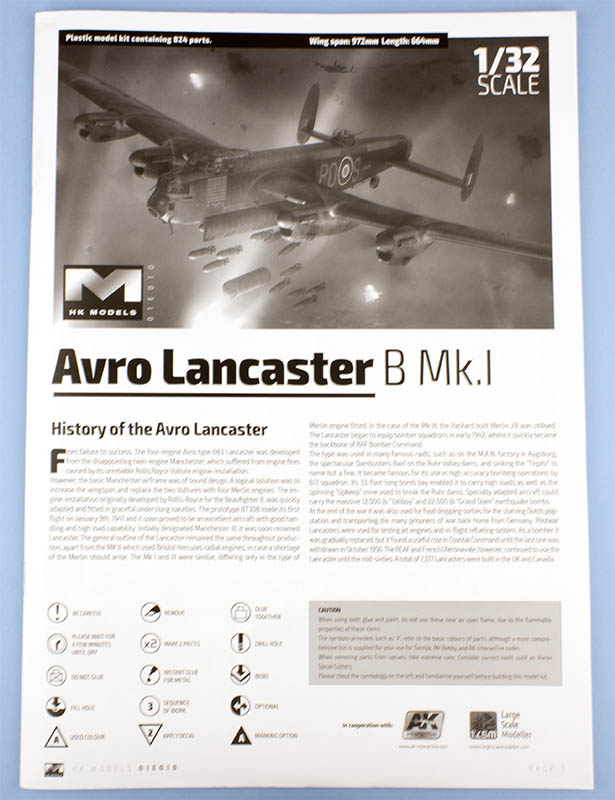

The last few pages are given over to a painting and markings guide, including a generic stencil placement guide applicable to all options. There's also a colour chart on the outside of the last page, giving specific paint matches for AK Interactive, Tamiya, and Gunze brands. The instructions could do with a splash of colour, but otherwise appear to be fully functional—if not a little daunting!
Decals and Markings
The decals are provided on two sheets, neither of which is as large as I was expecting. There's also a tiny addendum sheet lurking in the plastic bag with the photo-etched fret, which contains only a single decal.
To be honest, I can see little difference between the single erratum decal, and the original it is intended to replace, other than the EMERGENCY text missing its M on the replacement. No explanation is given for its inclusion, so further research is probably necessary to sort that one out.
Since writing the paragraph above, it has been pointed out that the original stencil decal features the text PULL HAND, whereas the erratum version has been corrected to say PULL HARD. My apologies for the confusion!
The decals themselves are exquisitely printed by Cartograf, with perfect registration and good colour density.
Markings are provided for the following three aircraft:
- Lancaster B Mk I, R5868/OL-Q, No. 83 Sqn RAF, Wyton, UK, June 1943
- Lancaster B Mk I, R5868/PO-S, No. 467 Sqn (RAAF), Waddington, UK, May 1944
- Lancaster B Mk I, W4783/AR-G, No. 460 Sqn (RAAF), Binbrook, UK, May 1944
Conclusion
This is a long-awaited and much-anticipated release, and with the recent announcement of a competing kit coming from Wingnut Wings sometime in the next year or so, talk of large scale Lancasters has reached a fever pitch. Now that it's finally here, I can say without hesitation that this is an excellent kit. It's highly detailed, but there's also room for superdetailers and aftermarket players to make their mark. Not being a Lancaster expert, I can't vouch for the accuracy of the kit, but it seems well-researched—especially given that HK Models threw out all the initial CAD design work to start again with better and more accurate data.
There are a few minor niggles, such as the abundance of ejector pin marks, the odd design of the canopy blisters, or (in my example) some defects in the surface detail. But these pale in comparison to the overwhelming quality of the rest of the kit, and the imposing presence it will have when completed. Sure, the company didn't deliver on its initial promise of stressed-skin surface detail, but I personally prefer the clean, unbattered look anyway. For those modellers for whom this is an important detail, the Wingnut Wings kit will be their preferred choice. Otherwise, I have no hesitation in recommending this kit to Lancaster fans, and look forward to tackling mine some day.
© Kevin Futter 2018
This review was published on Monday, December 31 2018; Last modified on Tuesday, January 01 2019

